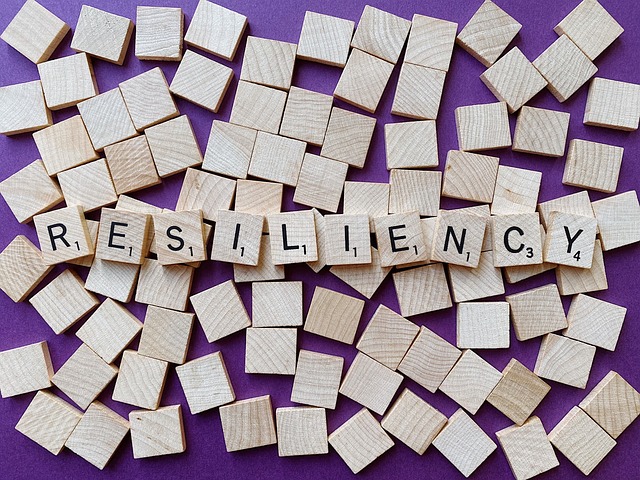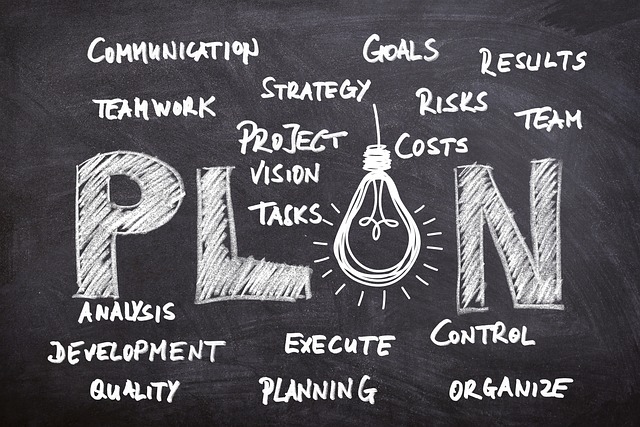Understanding Work-Life Balance
Let’s take a closer look at the concept of work-life balance. This term has gained popularity over the past few years, especially in the context of entrepreneurship and the demanding nature of modern jobs. Many people find themselves struggling to juggle the numerous tasks that both work and personal life present. Striking a balance between the two can be challenging yet crucial for maintaining mental and physical health. The key idea here is to create a harmonious relationship between your work commitments and your personal life. When you achieve work-life balance, you’re not only boosting your productivity but also enhancing your overall well-being.
Work-life balance manifests differently for everyone. For some, it might mean working flexible hours to ensure they have time for family, hobbies, or self-care. For others, it might involve setting clear boundaries on work hours and sticking to them religiously. Entrepreneurship often amplifies these challenges because the lines between work and personal life become blurred. This is especially true in the initial stages of starting a business. An entrepreneur frequently sacrifices personal time to ensure the new venture succeeds. Effective planning becomes imperative in achieving that balance. By devising a robust plan, you can prioritize and allocate time wisely, ensuring none of the facets of your life are neglected.
Exploring Effective Planning Techniques
Effective planning is the bedrock of achieving work-life balance. But what does effective planning entail? It involves strategically allocating your time and resources to ensure all critical aspects of life are covered. It begins with understanding your priorities. Making a list, whether on paper or digitally, can help clarify what’s essential. This list should not just include professional obligations; personal endeavors such as family activities, health routines, and hobbies need equal attention. For instance, if physical fitness is a priority, block out workout times as diligently as you would for a business meeting. This kind of strategic planning helps foster not just a balance but an integrated approach to life.
Another technique worth exploring is time blocking. This involves dedicating specific blocks of time to different tasks throughout the day. Imagine your calendar filled with structured time slots for work tasks, meetings, meals, family time, and even relaxation. This method prevents the chaos of multitasking, which often leads to burnout. When you set aside designated time for each activity, you’re more likely to focus and complete tasks efficiently. Moreover, this method allows you to visually see where your time goes, helping you adjust and fine-tune your planning as needed. With effective planning tools at your disposal, such as digital calendars or planning apps, incorporating this technique becomes seamless.
The Role of Boundaries in Work-Life Balance
Boundaries play a crucial role when we talk about work-life balance, especially for entrepreneurs. It’s tempting to keep working “just a little longer,” but those extra minutes can quickly add up and take a toll on your personal life. Setting boundaries is about defining where work stops and personal life begins. This is vital for maintaining mental health and ensuring you’re fully present in all areas of your life. Communicate these boundaries clearly—not just to yourself but also to your colleagues, clients, and loved ones. Let everyone know your work hours and when you need time to recharge.
Implementing these boundaries might require some trial and error. Perhaps you find it difficult to stop working at 5 PM because you enjoy your work, or maybe after-hours calls keep interrupting family time. Reflecting on these challenges allows you to adjust your approach effectively. You could designate your home office as a workspace that you only enter during work hours and close the door when you’re finished for the day. Additionally, using technology smartly can enhance your boundary-setting, too. Tools that mute notifications or allow you to set “Do Not Disturb” modes on devices can help keep your boundaries intact. Ultimately, respecting these boundaries reinforces your commitment to work-life balance.
Time Management Skills for Entrepreneurs
Effective time management is another key ingredient for work-life balance. As an entrepreneur, you have a multitude of tasks vying for your attention. You need to prioritize effectively, and this requires a strategic approach. Start by identifying your most productive times of the day. Are you a morning person who tackles complex tasks better in the early hours? Or do you find your creative juices flowing in the evenings? Embrace your natural rhythms. Schedule pivotal tasks during these peak periods and reserve less demanding chores for when your energy dips.
Moreover, consider adopting the “Pomodoro Technique.” This technique revolves around working for 25 minutes straight on a task and then taking a 5-minute break. These short bursts of focused effort followed by periodic rest periods can significantly enhance productivity. Use these breaks not just to stretch but also engage in quick personal activities—grab a cup of tea, take a short walk, or practice mindfulness. Each break serves as a mental recharge that can increase your focus in your following work session, making time management not only about efficiency but also about self-care.
Leveraging Tools for Balance
In this digital age, a plethora of tools can assist with planning and maintaining work-life balance. From productivity applications to communication platforms, these tools are designed to streamline your efforts and save time. For instance, project management tools such as Trello or Asana help you organize tasks, set deadlines, and manage team collaboration efficiently. They can break down larger projects into manageable tasks, making it easy to see what needs immediate attention. By using these tools, you can avoid feeling overwhelmed and distribute your workload more evenly throughout the day.
Calendar applications like Google Calendar also play a vital role. They allow you to visualize your commitments, set reminders for tasks and even schedule personal appointments. By incorporating these personal commitments into your calendar, you ensure that personal health and leisure activities receive the same attention as work commitments. Furthermore, using cloud-based services for document management lets you access your documents from anywhere, allowing for increased flexibility—an essential component of work-life balance, especially in entrepreneurship where constant connectivity is the norm.
Embracing Flexibility in Planning
Incorporating flexibility into your planning is vital. Life is unpredictable, often throwing curveballs that disrupt even the best-laid plans. Embracing a flexible mindset allows you to adapt to unforeseen challenges without being overwhelmed. It’s about having a structured plan that doesn’t feel rigid. For example, if you have a meeting scheduled but a family member needs your support unexpectedly, being flexible means adjusting your plans while ensuring that key priorities are still met. Acknowledging these situations and knowing how to adjust can lead to a healthier state of mind.
Flexibility also allows you to celebrate spontaneous moments without feeling guilty about your plans. You might find that a last-minute gathering with friends or family can provide the recharge you need to tackle work tasks effectively. The beauty of planning lies in its ability to allow room for spontaneous joys, contributing to a fuller life experience. Ultimately, a balance between structure and flexibility can set the stage for both professional success and personal happiness.
Health and Well-Being in Balance
Maintaining work-life balance isn’t solely about managing time; it also involves prioritizing health and well-being. Entrepreneurs often find themselves consumed by work, neglecting their physical and mental health. However, integrating well-being practices into your routine is essential. Consider engaging in regular physical activity. Exercise not only boosts your physical health but also enhances mental clarity and stress management. Identify activities that you enjoy, whether it be walking, dancing, yoga, or strength training, and make them an integral part of your plan.
In addition to physical health, mental well-being often requires mindful practices. Techniques such as meditation, deep breathing exercises, or even journaling can help manage stress. Taking a few minutes each day for these practices can significantly impact your daily outlook. Investing in mental health is as crucial as nurturing your business. When you feel good mentally and physically, you are likely to be more productive and creative in your work. This dual investment pays dividends, leading to sustainable success in entrepreneurship.
Cultivating Supportive Relationships
Finally, cultivating supportive relationships plays a significant role in achieving work-life balance. Surrounding yourself with positive influences can help you maintain focus on what matters and provide you the encouragement you need during challenging times. This network includes family, friends, mentors, and even fellow entrepreneurs who understand your struggles. When you share your goals and challenges with others, you create accountability that helps keep you on track.
Make time to connect with these individuals regularly. Whether it’s a family dinner, weekly catch-up with a friend, or networking events with professionals in your field, these activities can rejuvenate your spirits and reinforce your purpose. In addition, don’t hesitate to ask for help when you feel overwhelmed. Having a support system allows you to distribute responsibilities, alleviating some of the pressure so you can focus on your priorities. Remember, asking for help is not a sign of weakness—it’s a step towards ensuring that you can maintain a sustainable work-life balance.
FAQs
What is work-life balance?
Work-life balance refers to the ability to prioritize work and personal life effectively. It means allocating time and energy between professional duties and personal activities in a harmonious way, ensuring that neither aspect suffers at the expense of the other.
How can effective planning improve work-life balance?
Effective planning helps individuals identify priorities, allocate time realistically, and create structured routines. By planning efficiently, you can ensure that all areas of life receive attention, reducing stress and increasing overall satisfaction.
What techniques help with time management for entrepreneurs?
Techniques such as time blocking, the Pomodoro Technique, and using productivity applications can significantly enhance time management. These methods help structure time effectively, maintain focus, and reduce overwhelm.
Why are boundaries important for work-life balance?
Boundaries define the limits between work and personal life. They help prevent burnout by ensuring you make time for personal needs and activities, allowing you to recharge and stay productive without sacrificing well-being.
How can I incorporate well-being practices into my routine?
Incorporating well-being practices involves engaging in regular physical activity, mindfulness practices, and ensuring adequate rest. Set aside specific times in your day dedicated to these activities, treating them as valuable commitments just like work meetings.



